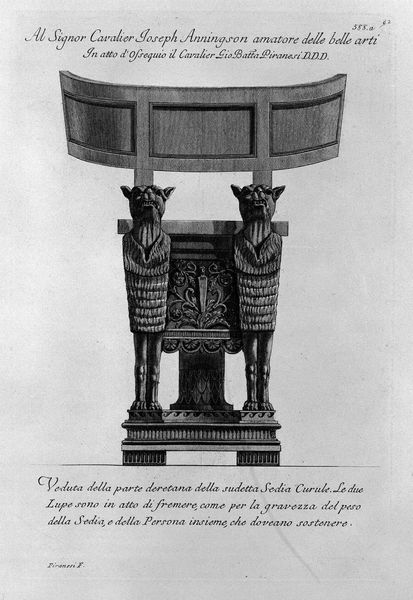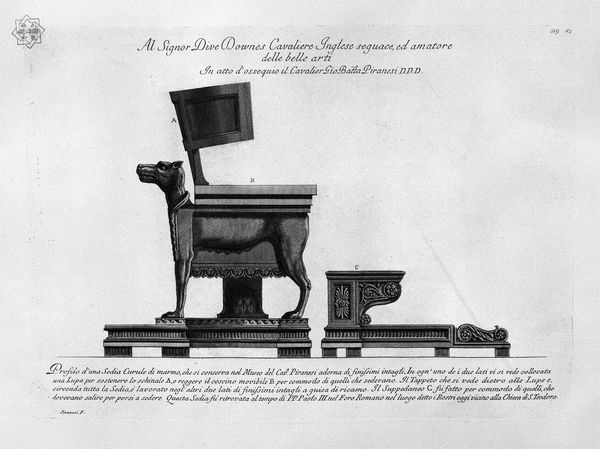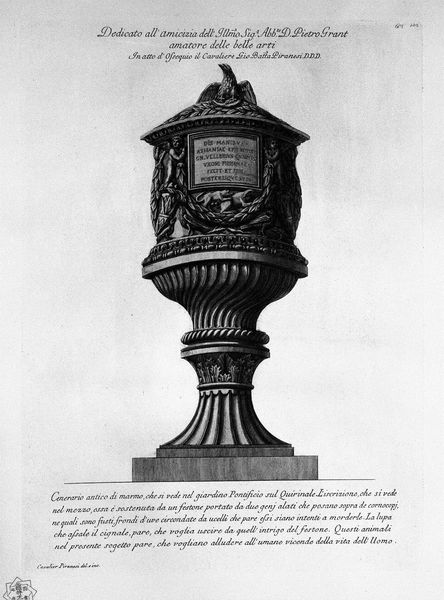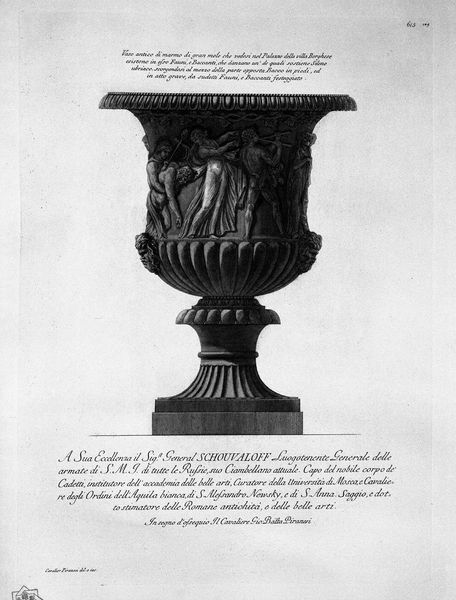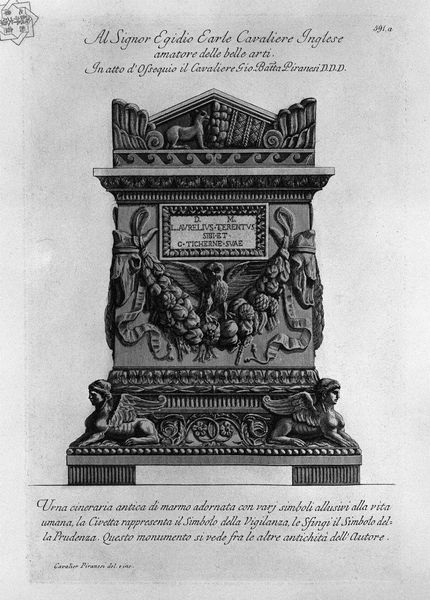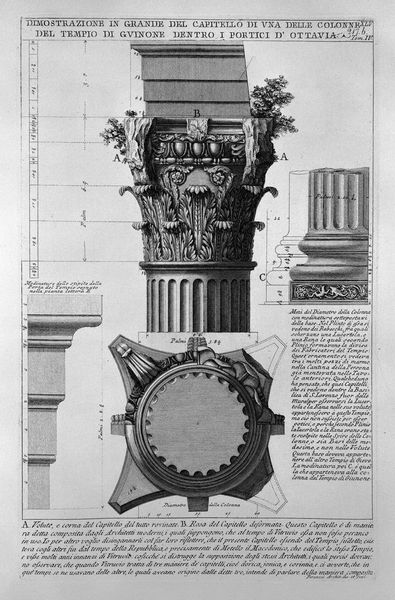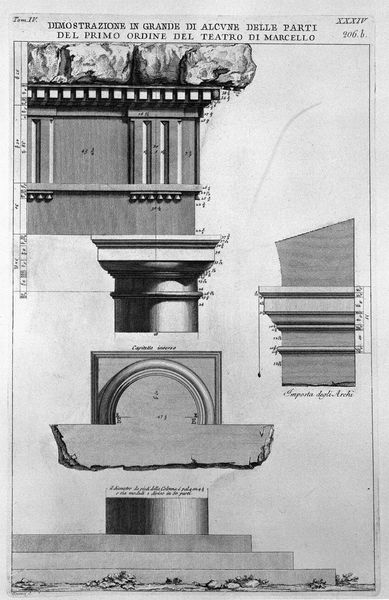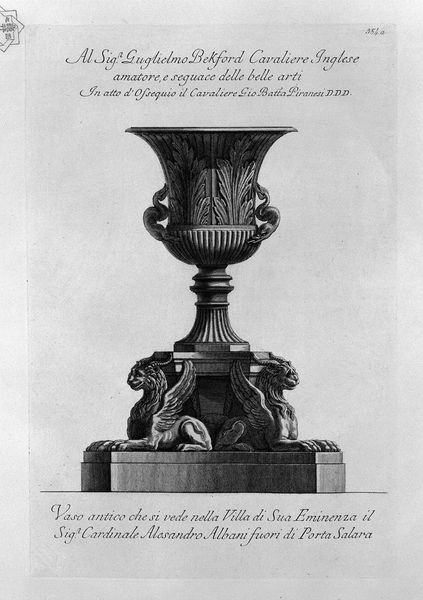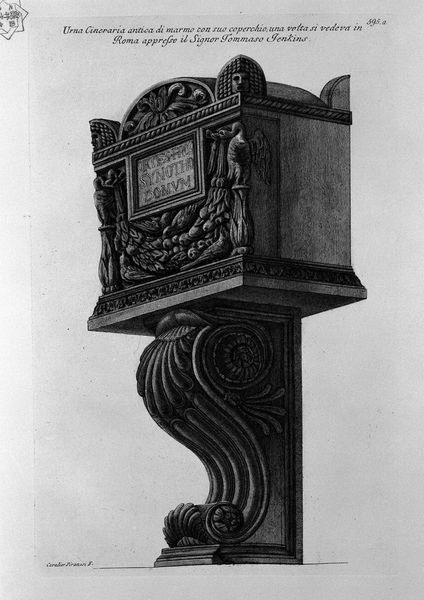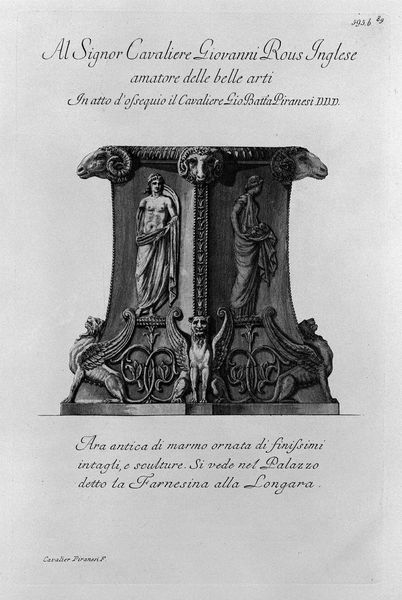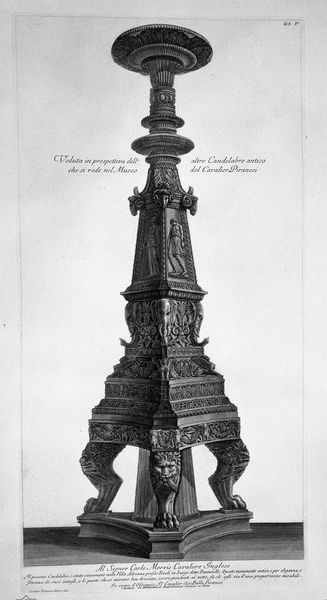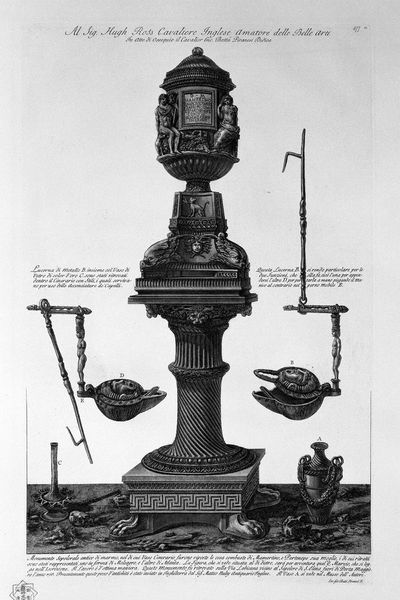
drawing, print, engraving, architecture
#
drawing
#
baroque
# print
#
old engraving style
#
furniture
#
ancient-mediterranean
#
column
#
arch
#
graphite
#
engraving
#
architecture
Copyright: Public domain
Curator: Here we have "Prospectus of the same chair," a print by Giovanni Battista Piranesi, whose work often explored ancient Roman architecture and design. Editor: My first impression is one of quirky monumentality! It’s like a throne designed by someone with a delightful disregard for comfort or practicality. It feels both grand and a little bit silly, you know? Curator: Indeed. Piranesi, working in the 18th century, was deeply fascinated by the grandeur and imagined glory of antiquity, specifically ancient Rome. His works invite critical consideration about issues of power, legacy, and cultural memory. The chair, or "Sedia Curule" as Piranesi notes, is an imagined reconstruction of a type of seat used by Roman magistrates. Editor: So, it's not exactly a drawing of something that existed, but more of a speculative design based on fragments and descriptions? That makes the strangely human-like legs even more intriguing! They add such a peculiar character to an otherwise rigid, architectural form. Like captive spirits holding up the seat of power. Curator: Precisely. Note the intricate detailing achieved through engraving—the delicate floral patterns, the suggestion of immense weight and scale, but then undermined by the incompleteness, the ghostly inscription that evokes themes of memory, ruin, and the fleeting nature of empires. What’s missing, erased by time, becomes as important as what’s visible. Editor: There’s also something darkly humorous about this meticulous depiction of a non-functional object. All that precision, all that effort poured into immortalizing a chair no one could actually sit on anymore! It feels like a gentle poke at the pompousness of power, doesn’t it? A visual joke etched in graphite. Curator: That resonates with readings of Piranesi as an engraver-archaeologist critiquing the politics of his time, the elitism within archaeological and artistic circles… who gets to decide what narratives of history are preserved and valorized. He turns those ideas, like the chair, on their heads. Editor: Thinking about it now, this ghostly throne challenges how we conceive the very idea of antiquity—not as something frozen in the past but, more as an evolving conversation we're constantly having across time and interpretation. Thanks for sharing the backdrop with me. Curator: And thank you for lending your own creative eye and playful analysis. I hadn’t considered the chair as a “joke” before. Another narrative to be considered in intersection with social critique and historical reflection.
Comments
No comments
Be the first to comment and join the conversation on the ultimate creative platform.

